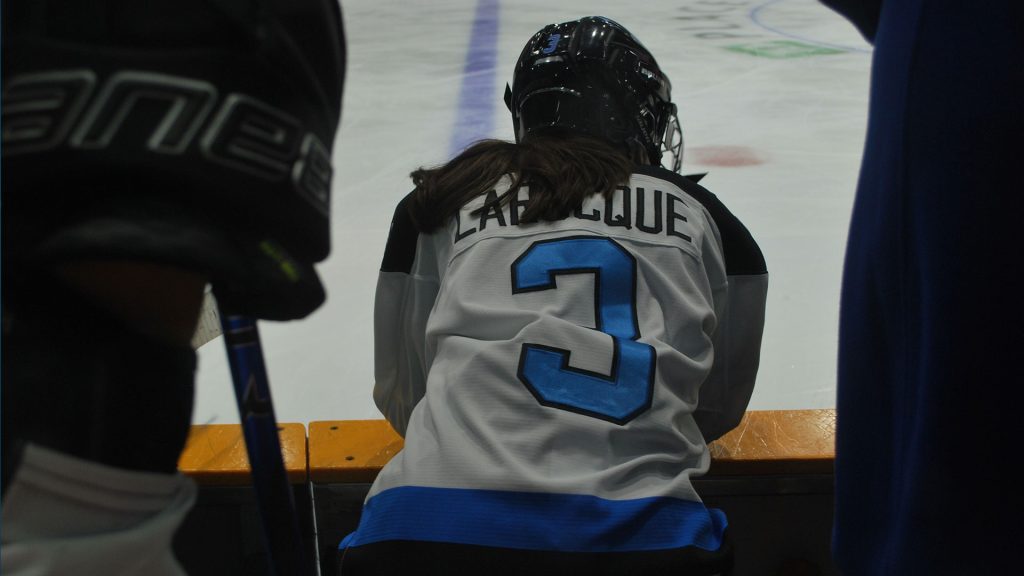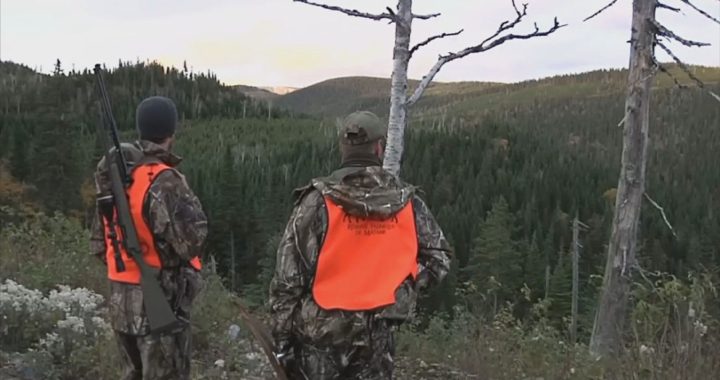
Jocelyne Laroque waits for her next shift in the 3rd period against Ottawa on Jan. 23, 2024. Photo: Fraser Needham/APTN.
A handful of Indigenous players are part of the new Professional Women’s Hockey League, or PWHL, which is creating a lot of buzz across parts of North America.
Two of these players are Victoria Bach and Jocelyne Larocque who both play for Toronto.
“Honestly, I can’t put it into words how exciting and special this is for us,” Bach said in an interview from her home in Toronto. “Not only us but future generations. You know aside from hockey, like the opportunities that this league is going to create.”
Players like Bach and Larocque have played hockey at its highest levels. Larocque won gold with Team Canada at the Sochi Olympics in 2014. Bach won gold with Canada at the 2021 World Championships.
But they’ve never been able to make a career of a sport they do so well and that is what the Professional Women’s Hockey League is all about.
“Yeah it’s been fantastic,” said Larocque, who has a goal and two assists in seven games after Toronto’s loss in Ottawa. “We get to eat, sleep, play hockey. It’s everything that we’ve dreamt about and honestly, it’s surpassed a lot of my expectations.
“Every day I feel grateful and just really happy to be part of Toronto and just looking forward to every day.”
Watch Fraser’s story on Indigenous players in the PWHL:
Larocque is Métis and comes from the small town of Ste. Anne, Man., southeast of Winnipeg.
Bach is a member of the Mohawks of the Bay of Quinte, 250 km southwest of Ottawa.
Picked 38th overall in the draft by Toronto, Bach is currently not on the roster as she finishes up a university degree in education. She says she plans to suit with the team next month.
The PWHL got underway on New Year’s Day and games have been regularly selling out in places like Ottawa, Toronto and Saint Paul, Minnesota.
The league also has teams in Montreal, Boston and New York.
Toronto coach Troy Ryan said the high level of fan interest doesn’t surprise him in the slightest.
“Like anything, if you do put some financial backing and support behind things, generally fans will support it,” he said. “I think it’s always been a great product and it’s taken this PWHL group to put it in the forefront and get it in front of people.”
The PWHL also features something that hasn’t been typically allowed in women’s hockey at the amateur and Olympic levels – body checking.
Ryan explained the extra level of competition this way: “They [the players] also don’t want it to be a league that just anyone can play in. You’ve got to be a high-performance athlete, you’ve got to train physically, you’ve got to be able to play in traffic.”

Bach and Larocque, picked 2nd by Toronto, have the added responsibility of being ambassadors of the game for young female Indigenous hockey players.
As do the other two Indigenous players in the PWHL – Jamie Lee Rattray who plays for Boston and Abby Roque who is with the New York team.
Both Toronto players said it is a responsibility they take very seriously.
“The way I see it is representation matters,” Larocque said. “You know, if there is a young Indigenous child out there that dreams of playing professional hockey, they can look to myself, to Victoria Bach, to Abby Roque – all of us Indigenous players and to be able to see it is huge.”
Bach added she sees it as being a role model where none previously existed.
“Now them (young female Indigenous players) having the opportunity to have a platform where they can look and watch us play and get female role models. I think that was really important because I know growing up I always idolized NHL players – people like Mats Sundin [former Toronto Maple Leaf captain]. Growing up watching them and not having really any female role models and definitely none that were Indigenous that played hockey.”
On the ice on this January night, Ottawa edged out Toronto in a close 3-1 game for the team’s first win at home.
But either way, it appears the PWHL is about much more than the results of one particular hockey game.
More accurately, the league is about the future of women’s professional hockey which at this point in time looks incredibly bright.










